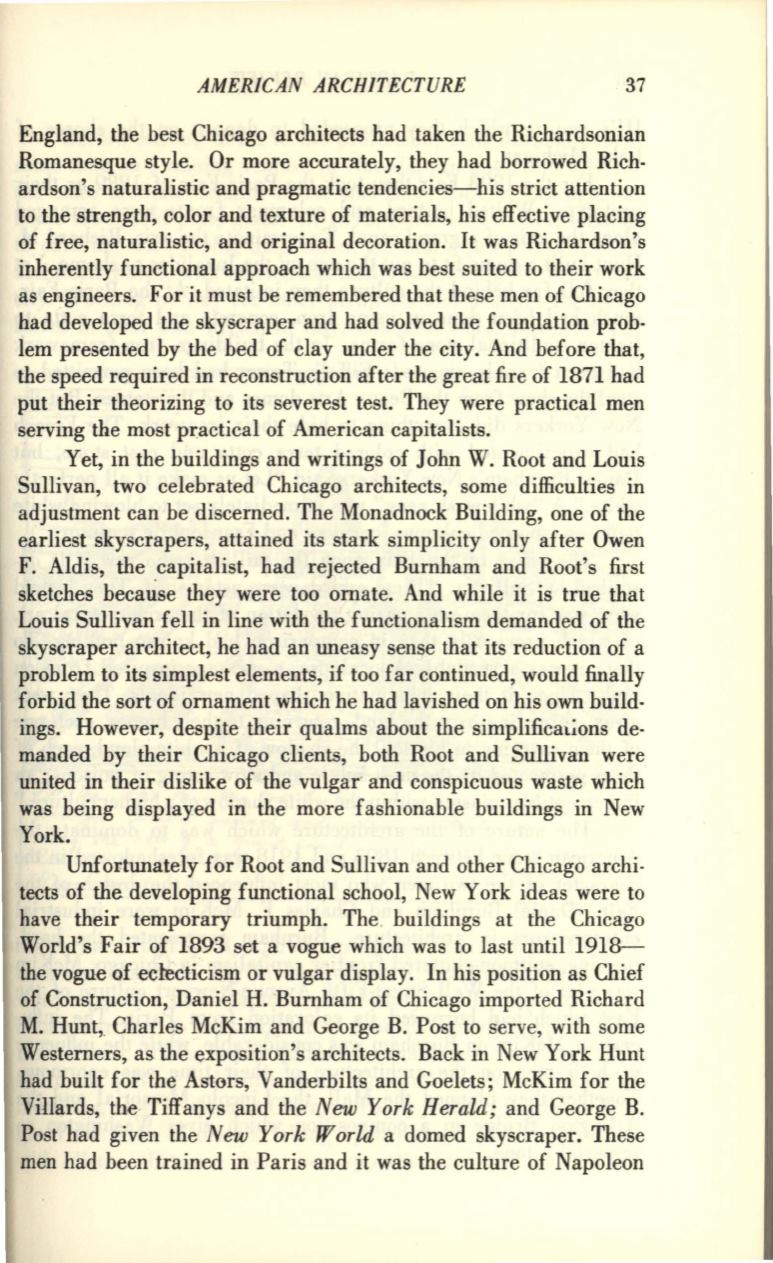
AMERICAN ARCHITECTURE
37
England, the best Chicago architects had taken the Richardsonian
Romanesque style. Or more accurately, they had borrowed Rich–
ardson's naturalistic and pragmatic tendencies-his strict attention
to the strength, color and texture of materials, his effective placing
of free, naturalistic, and original decoration. It was Richardson's
inherently functional approach which was best suited to their work
as engineers. For it must be remembered that these men of Chicago
had developed the skyscraper and had solved the foundation prob–
lem presented by the bed of clay under the city. And before that,
the speed required in reconstruction after the great fire of 1871 had
put their theorizing to its severest test. They were practical men
serving the most practical of American capitalists.
Yet, in the buildings and writings of John W. Root and Louis
Sullivan, two celebrated Chicago architects, some difficulties in
adjustment can be discerned. The Monadnock Building, one of the
earliest skyscrapers, attained its stark simplicity only after Owen
F. Aldis, the capitalist, had rejected Burnham and Root's first
sketches because they were too ornate. And while it is true that
Louis Sullivan fell in line with the functionalism demanded of the
skyscraper architect, he had an uneasy sense that its reduction of a
problem to its simplest elements, if too far continued, would finally
forbid the sort of ornament which he had lavished on his own build–
ings. However, despite their qualms about the
simplificat~ons
de–
manded by their Chicago clients, both Root and Sullivan were
united in their dislike of the vulgar· and conspicuous waste which
was being displayed in the more fashionable buildings in New
York.
Unfortunately for Root and Sullivan and other Chicago archi–
tects of the developing functiona.l school, New York ideas were to
have their temporary triumph. The. buildings at the Chicago
World's Fair of 1893 set a vogue which was to last until 1918-
the vogue of eclecticism or vulgar display. In his position as Chief
of Construction, Daniel H. Burnham of Chicago imported Richard
M. Hunt, Charles McKim and George
B.
Post to serve, with some
Westerners, as the exposition's architects. Back in New York Hunt
had built for the Astors,
V
anderbilts and Goelets; McKim for the
Viliards, the Tiffanys and the
New York Herald;
and George
B.
Post had given the
New York World
a domed skyscraper. These
men had been trained in Paris and it was the culture of Napoleon


